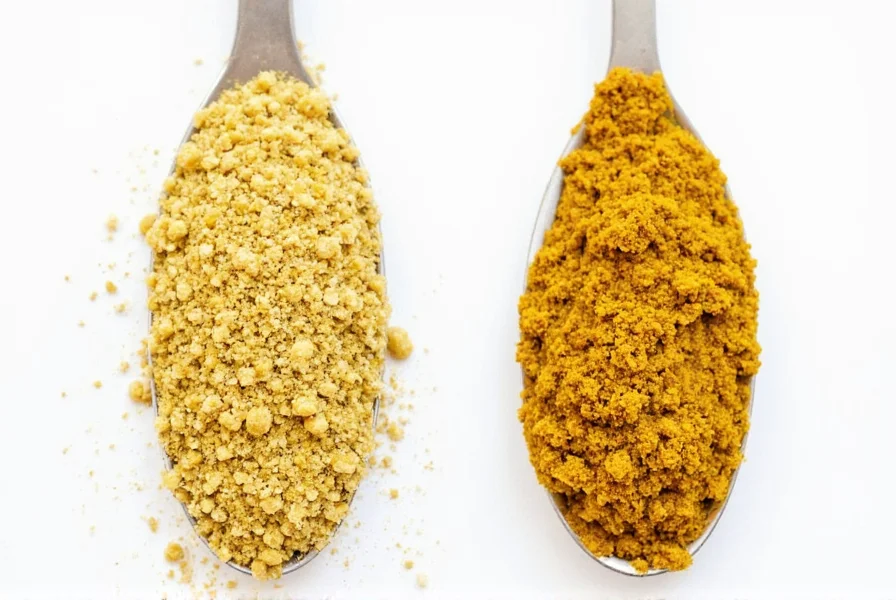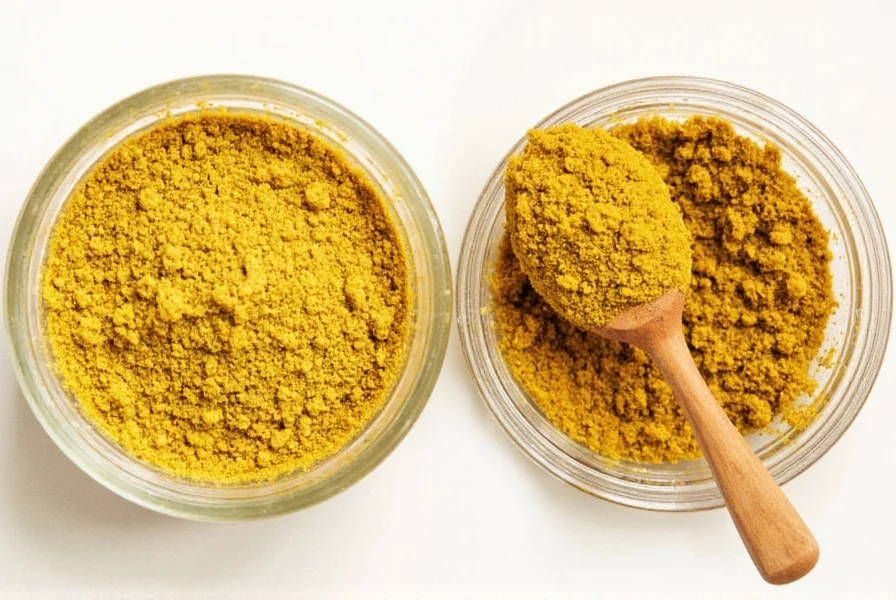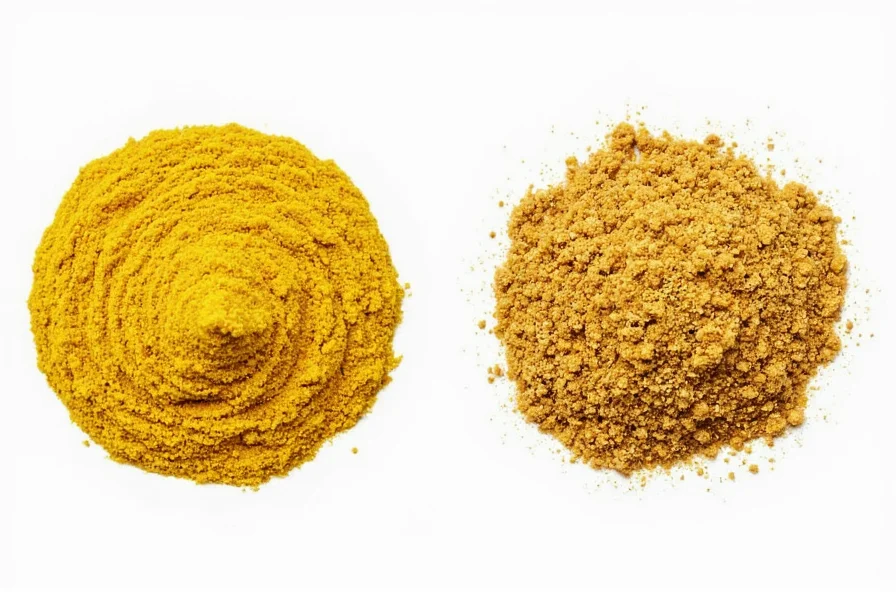When navigating recipe instructions, understanding ingredient terminology is crucial for achieving perfect results. Many home cooks encounter confusion between ground mustard and dry mustard, wondering if these are distinct products requiring different substitutions. The straightforward answer eliminates this uncertainty: these terms describe identical mustard powder forms created from pulverized mustard seeds.
Understanding Mustard Terminology
The terms "ground mustard" and "dry mustard" both describe mustard in its powdered form, created by grinding mustard seeds until they reach a fine consistency. This powder form provides several advantages over whole seeds in cooking applications. The terminology difference stems primarily from regional naming preferences rather than any actual product variation.
Food manufacturers and recipe developers sometimes use these terms inconsistently, which contributes to the confusion. However, when examining product labels at grocery stores, you'll find that mustard powder is marketed using both descriptions interchangeably. This consistency across commercial products confirms their equivalence in culinary contexts.
Composition and Production Process
Both ground mustard and dry mustard begin as mustard seeds—typically yellow, brown, or black varieties. The production process involves:
- Harvesting mature mustard seeds
- Cleaning and sorting the seeds
- Grinding the seeds into a fine powder
- Packaging the powder for distribution
No additional ingredients are typically added during this process for pure mustard powder. Some commercial products may include anti-caking agents, but this applies equally to products labeled as either ground or dry mustard.
| Characteristic | Ground Mustard | Dry Mustard |
|---|---|---|
| Base Ingredient | Mustard seeds | Mustard seeds |
| Form | Fine powder | Fine powder |
| Flavor Profile | Sharp, pungent | Sharp, pungent |
| Common Uses | Dressings, marinades, spice rubs | Dressings, marinades, spice rubs |
| Shelf Life | 1-2 years | 1-2 years |
Practical Applications in Cooking
Chefs and home cooks use ground/dry mustard powder to add distinctive flavor to various dishes. When reconstituted with liquid, the powder activates enzymes that create mustard's characteristic pungency. The powder form offers several advantages:
- Longer shelf stability compared to prepared mustard
- Concentrated flavor that blends easily into dry rubs
- Consistent texture for emulsifying dressings and sauces
- Control over final product strength by adjusting liquid ratios
When following recipes that call for either term, you can confidently use mustard powder without adjustment. Whether making classic deviled eggs, barbecue spice blends, or cheese sauces, the powder delivers consistent results regardless of which terminology the recipe employs.

Substitution Guidance
Understanding that ground mustard equals dry mustard simplifies recipe adaptation. However, questions often arise about substituting prepared mustard or whole seeds:
- Dry to prepared mustard: Use 1 teaspoon mustard powder plus 1-2 teaspoons liquid (water, vinegar, or wine) to replace 1 tablespoon prepared mustard
- Whole seeds to powder: 1 tablespoon whole seeds yields approximately 2 teaspoons powder when ground
- Prepared mustard to powder: Not recommended as a direct substitute due to moisture content differences
When substituting between dry mustard powder and prepared mustard, remember that the powder provides more concentrated flavor without added moisture, which can affect recipe chemistry in baking or sauce preparation.
Storage Recommendations
Proper storage maintains the potency of your mustard powder, whether labeled as ground or dry. Store in an airtight container away from heat and light. Under optimal conditions, mustard powder retains its flavor for 1-2 years. Over time, the powder gradually loses its pungency, so check older containers by mixing a small amount with liquid to test potency before using in important recipes.
Moisture is the primary enemy of dry mustard powder, as it can cause clumping and accelerate flavor degradation. Consider adding a silica packet to your spice container if you live in a humid climate to extend shelf life.

Common Misconceptions Clarified
Several myths persist about mustard terminology that deserve clarification:
- Myth: Dry mustard contains additional drying agents
Fact: Pure mustard powder contains only ground seeds, though some commercial products may include anti-caking agents - Myth: Ground mustard is coarser than dry mustard
Fact: Both terms refer to the same fine powder consistency - Myth: Regional differences affect the product
Fact: While terminology preference varies by region, the product remains identical
Understanding these distinctions helps prevent unnecessary substitutions or recipe modifications that could compromise your culinary results.
Practical Recipe Applications
Mustard powder shines in numerous culinary applications where its dry form provides advantages over prepared mustard:
- Dry rubs: Adheres perfectly to meat surfaces without creating paste
- Baking: Incorporates evenly into bread doughs and cheese biscuits
- Emulsions: Helps stabilize vinaigrettes and mayonnaise without excess moisture
- Marinades: Blends with other dry spices for consistent flavor distribution
Professional chefs particularly value mustard powder for its ability to deliver consistent flavor without altering recipe moisture balances—a critical consideration in precision cooking.
Can I use ground mustard instead of dry mustard in a recipe?
Yes, you can use ground mustard interchangeably with dry mustard in any recipe. These terms refer to the exact same product—finely ground mustard seeds—and can be substituted one-for-one without any adjustments to your recipe.
What's the difference between mustard powder and prepared mustard?
Mustard powder (ground/dry mustard) is dehydrated mustard seeds in powdered form, while prepared mustard contains this powder already mixed with liquids like vinegar, water, and sometimes additional ingredients. Mustard powder has a longer shelf life and concentrates more flavor per volume than prepared mustard.
How much prepared mustard equals one teaspoon of dry mustard?
One teaspoon of dry mustard powder typically equals one tablespoon of prepared mustard. However, when substituting, you'll need to account for the additional liquid in prepared mustard, which may affect recipe consistency, especially in baking applications.
Does dry mustard expire?
Dry mustard powder typically maintains optimal flavor for 1-2 years when stored properly in an airtight container away from heat and light. While it won't spoil, it gradually loses potency over time. To test older mustard powder, mix a small amount with water—if it doesn't develop the expected pungency, it's time to replace it.
Why do some recipes specify dry mustard while others say ground mustard?
The different terminology reflects regional preferences and historical usage rather than any actual product difference. Recipe authors may use one term based on what they're familiar with, but both refer to the same mustard powder product. You can follow any recipe using either term interchangeably without modification.











 浙公网安备
33010002000092号
浙公网安备
33010002000092号 浙B2-20120091-4
浙B2-20120091-4